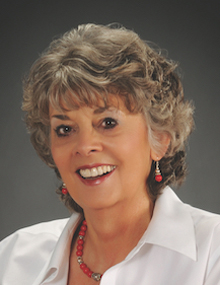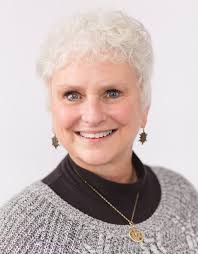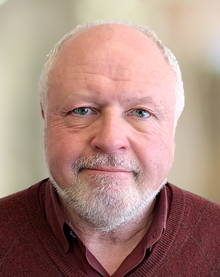Printed in the Winter 2021 issue of Quest magazine.
Citation: Goldsberry, Clare, "Members’ Forum: Enlightenment: Beyond Knowing" Quest 109:1, pg 12-13
By Clare Goldsberry
 There is on the path a state or of knowing in which enlightenment or cosmic consciousness often occurs. In this state, one moves from knowing everything that one believes to be true to a state of not knowing, or knowing nothing.
There is on the path a state or of knowing in which enlightenment or cosmic consciousness often occurs. In this state, one moves from knowing everything that one believes to be true to a state of not knowing, or knowing nothing.
Zen master Shunryu Suzuki coined the term “beginner’s mind” for that state in which all possibilities exist and we are freed from the rigid bonds of knowing, which can be an obstacle to enlightenment. This state is beyond knowing in an intellectual sense, so that we suddenly know that we do not know.
In speaking of knowledge, many teachers refer to conventional knowledge: knowing about the world we live in and the objects that can be apprehended by our physical senses. The Hindu philosopher Sri Aurobindo says that this is only “a higher Ignorance,” since it stops short of the knowledge of absolute Reality. Conventional knowledge teaches that objects exist by their form and function. True knowledge—what Buddhists would call ultimate truth—is accessible only by those who have gone beyond the conventional knowledge of knowing about phenomena to the knowledge of how all phenomena truly exist.
Philosopher Karl Jaspers, commenting on Immanuel Kant’s philosophy, said that “knowledge can be deceptive. Knowledge inflates (if it is delusion) but knowledge which reaches to the very limits of knowledge makes for humility.” This is similar to Aurobindo’s teaching that knowledge is inflated ignorance.
The limit of knowledge is knowing that we do not know; going beyond knowledge and knowing to not knowing opens the path to freedom of experiencing any and all possibilities. Knowing makes us responsible because once one “knows,” one is beholden to that knowledge. In religion, it becomes a belief system. One who knows then becomes a slave to this knowledge. One who does not know is the master of Truth.
There’s a story of the African tribal chief who said to the Christian missionary, “Is it true that if I did not know about Jesus, I would not go to hell?”
“Yes, that is true,” the Christian missionary replied.
The chief looked at the missionary and asked, “Then why did you tell me?”
Knowledge is useful until it becomes an obstacle to the seeker. Lao Tzu said, “The farther you go, the less you know.” That is the way of the spiritual path. Zen Buddhist teacher Joan Tollifson said, “openness of non-knowing—the heart of how science works—is the heart of spiritual awakening”; it is “when the grasping mind relaxes” that we can be open to whatever comes.
The spiritual search is pointless unless we unknow all we think we know about God, about the self, about Brahman, even about reality. As long as we cling to what we believe or know, we are never freed for the unknowing that leads to that higher gnostic experience. In his book about Meister Eckhart, Joel F. Harrington explained that Eckhart’s philosophy about achieving “direct experience of the divine” was not focused on any particular practice. Indeed the “pursuit was doomed until one abandoned all preconceptions about God Himself . . . To know the uncreated Creator directly required first unknowing the human-created God, a process known to theologians as the via negativa, or the negative way.”
Jaspers notes that knowledge can only be experienced in this world—in this “field of knowledge.” But that is not knowledge of being, which Kant says is impossible in this world. Aurobindo refers to this knowledge of being as gnosis. It is that which brings us to gnostic being, enabling us to live and act from the higher Mind.
The lower state of knowing is typically called intellectual knowledge; in Buddhism, it is called “conceptual” or “conditioned” knowledge, because it is the knowledge that we gain of the concepts of the physical universe that we have been conditioned to know since we were infants. Aurobindo calls this lower state of knowing “the Ignorance.” Typically, knowing involves thinking; our thoughts create the things we know and how we know them. But as the Buddhist teacher Christmas Humphreys said, “thought can never know, in the sense of immediate, direct awareness. Thinking must reach the end of thought before the next faculty takes over.”
Alexandra David-Neel, while studying in Tibet with Buddhist monks, learned of the doctrine of “going beyond” based on the Buddhist teaching of the Prajnaparamita. According to David-Neel, Prajnaparamita means something different to the Tibetans and Chinese than it did to the Hindus, from whom it was adopted. Tibetans translate that term as “excellent wisdom” or “highest wisdom.” For the Chinese it is “wisdom which has ‘gone beyond,’” according to the Prajnaparamita mantra:
O Wisdom which has gone beyond,
Gone beyond the beyond, to Thee homage.
Enlightenment enables us to see beyond duality in order to have truly gone beyond—beyond pairs of opposites, such as virtues and vices, good and bad. For it is in duality that we experience wrong seeing, delusions of samsara that keep us trapped. Going beyond also involves going beyond striving. David-Neel says that no one virtue, or even the practice of many virtues together, can bring liberation. All practices—particularly striving to be virtuous—are of the ego and therefore negate the goal. Ultimately there is no goal per se. By setting goals for our liberation and enlightenment, we are defining the path, and the path cannot be defined. The path is created as we walk it, step by step.
Knowing often disguises itself as truth, but it can become a trap that keeps the seeker locked into specific ideas about what is true and what is false. Many people who learn about the Buddhist Noble Eightfold Path often mistake one of its precepts—“right view”—as meaning there is only one view, and that is the right one! The Vietnamese monk Thich Nhat Hanh tells us that right view is no view. Right view is not belief, nor is it part of a belief system. Right view is key to enlightenment because it is open and spacious, not closed off and exclusive. Right view is seeing beyond the delusion of concepts, ideas, and opinions and moving beyond them to no-view.
The Buddha told the parable of crossing the river in a raft. The raft represents intellectual trainings, belief systems, or moral disciplines that promise to bring the seeker to the other shore— enlightenment. However, the raft is only a vehicle—an instrument or tool of knowledge—to get us to the other shore. Once we have reached that other shore, of liberation and enlightenment, we need to put the raft down and walk on. If we do not, it will become a burden to us and hinder our path. Even enlightenment is only the beginning.
The other shore, writes David-Neel, is “nowhere and everywhere; that which is beyond all our conceptions. Even transcendent wisdom—enlightenment—is a concept, so that to achieve enlightenment means we must drop our concepts of what enlightenment is or how we will experience it.”
The doctrine of nonaction—wuwei in Chinese (Chan) Buddhism—literally means “do nothing” or “nothing to be done.” According to David-Neel, the Tibetans consider nonaction to “be absolutely necessary for the production of the state of liberation” or “the annihilation of false views, ignorance of how things exist.” As long as we are locked into our concept of what enlightenment is and into a belief in doing all the right things, such as performing the proper rituals and saying the exact mantras, we will never experience enlightenment, because these concepts become obstacles to it.
Ultimately it doesn’t matter how many virtues we practice, classes we attend, or books we read. These practices and studies are preparation on the path to realizing enlightenment, but are not enlightenment in themselves.
The seeker prepares by being open to the possibilities that not knowing presents; looking with wisdom eyes, seeing all life—the entire physical world—differently; looking beyond concepts, opinions, and beliefs. The preparation is not of an exoteric form, but a preparing of the inner self—preparing the mind to see beyond the obstacles of what we think we know. It is a difficult path, because it involves leaving certainty behind. It requires that leap of faith that we must each take as seekers as we go from the delusions of knowing to not knowing.
Clare Goldsberry, a professional freelance writer and author for the past forty years, is a life-long student of religion and spiritual traditions including Christianity, Gnosticism, and philosophy. Her next book, Living Fearlessly, Dying Joyfully, will be published in 2021 by Monkfish.


 The theme for this issue is Enlightenment, a pertinent topic for our times.
The theme for this issue is Enlightenment, a pertinent topic for our times. There is on the path a state or of knowing in which enlightenment or cosmic consciousness often occurs. In this state, one moves from knowing everything that one believes to be true to a state of not knowing, or knowing nothing.
There is on the path a state or of knowing in which enlightenment or cosmic consciousness often occurs. In this state, one moves from knowing everything that one believes to be true to a state of not knowing, or knowing nothing. Full disclosure up front: I know nothing about the topic of this issue.
Full disclosure up front: I know nothing about the topic of this issue.